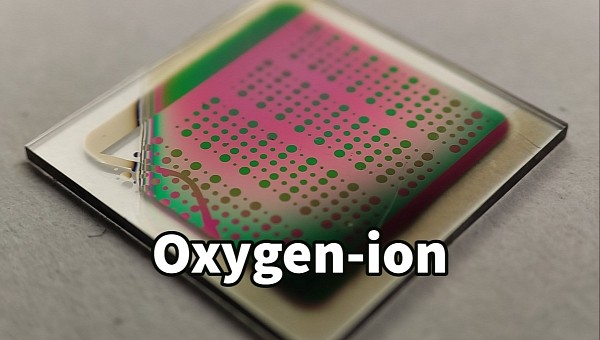Li-ion batteries power almost everything these days, but their star is waning as more promising chemistries are developed. Scientists at the Technische Universität Wien (TU Wien) in Austria have invented a new battery type that uses abundant materials. The Oxygen-ion battery is cheap to produce and can last forever.
Solid-state batteries have been inadvertently named forever batteries for their promised ability to endure many charge-discharge cycles, in theory. In the real world, solid-state cells are still unusable because they would die after just a few cycles. As you can see, the term “forever battery” is overrated in this case, but it doesn’t need to be. Many battery technologies promise to outshine the Li-ion batteries of today. And thanks to the scientists at the Technische Universität Wien (TU Wien) in Austria, there is now one more.
Their Oxygen-ion cell is a new type of battery that is perfect for energy storage and probably for other domains too. Its main characteristic is that its capacity does not degrade in time, which makes it worthy of the title of “forever battery.” The oxygen it uses for energy storage might be lost in secondary reactions, but adding more from the air is simple and ensures that oxygen-ion batteries will last basically forever.
Oxygen-ion batteries don’t need expensive or rare materials and use mostly ceramic materials. They can take in and let go of doubly negatively charged oxygen ions. When the oxygen-ion battery charges, oxygen ions move from one ceramic electrode to another. They can also be made to migrate back again, thus generating electricity. The principle is very similar to the lithium-ion battery, but with marked advantages.
Ceramic materials are not flammable, so fire incidents common with Li-ion batteries are simply impossible. In addition, there’s no need for rare elements that are expensive or harmful to mine, such as cobalt or nickel. The prototype battery created by the researchers at TU Wien uses lanthanum, an element that is not exactly rare, but not completely common either. Even this one can be replaced with something cheaper, and researchers are already working on that.
There are some disadvantages as well, which is expected as this type of battery is still in its infancy. One is its lower energy density, at one-third of Li-ion batteries. The TU Wien researchers say the oxygen-ion batteries work at high temperatures of between 200 and 400 degrees Celsius (390-750 degrees Fahrenheit), which makes them impractical for mobile devices and even cars, at least for the time being.
They are perfectly suited for energy storage, especially solar and wind energy. The lower energy density and high operating temperatures don’t count as drawbacks in these scenarios, especially as the huge advantages like long service life, increased safety, and affordability compensate for them.
Their Oxygen-ion cell is a new type of battery that is perfect for energy storage and probably for other domains too. Its main characteristic is that its capacity does not degrade in time, which makes it worthy of the title of “forever battery.” The oxygen it uses for energy storage might be lost in secondary reactions, but adding more from the air is simple and ensures that oxygen-ion batteries will last basically forever.
Oxygen-ion batteries don’t need expensive or rare materials and use mostly ceramic materials. They can take in and let go of doubly negatively charged oxygen ions. When the oxygen-ion battery charges, oxygen ions move from one ceramic electrode to another. They can also be made to migrate back again, thus generating electricity. The principle is very similar to the lithium-ion battery, but with marked advantages.
Ceramic materials are not flammable, so fire incidents common with Li-ion batteries are simply impossible. In addition, there’s no need for rare elements that are expensive or harmful to mine, such as cobalt or nickel. The prototype battery created by the researchers at TU Wien uses lanthanum, an element that is not exactly rare, but not completely common either. Even this one can be replaced with something cheaper, and researchers are already working on that.
There are some disadvantages as well, which is expected as this type of battery is still in its infancy. One is its lower energy density, at one-third of Li-ion batteries. The TU Wien researchers say the oxygen-ion batteries work at high temperatures of between 200 and 400 degrees Celsius (390-750 degrees Fahrenheit), which makes them impractical for mobile devices and even cars, at least for the time being.
They are perfectly suited for energy storage, especially solar and wind energy. The lower energy density and high operating temperatures don’t count as drawbacks in these scenarios, especially as the huge advantages like long service life, increased safety, and affordability compensate for them.






